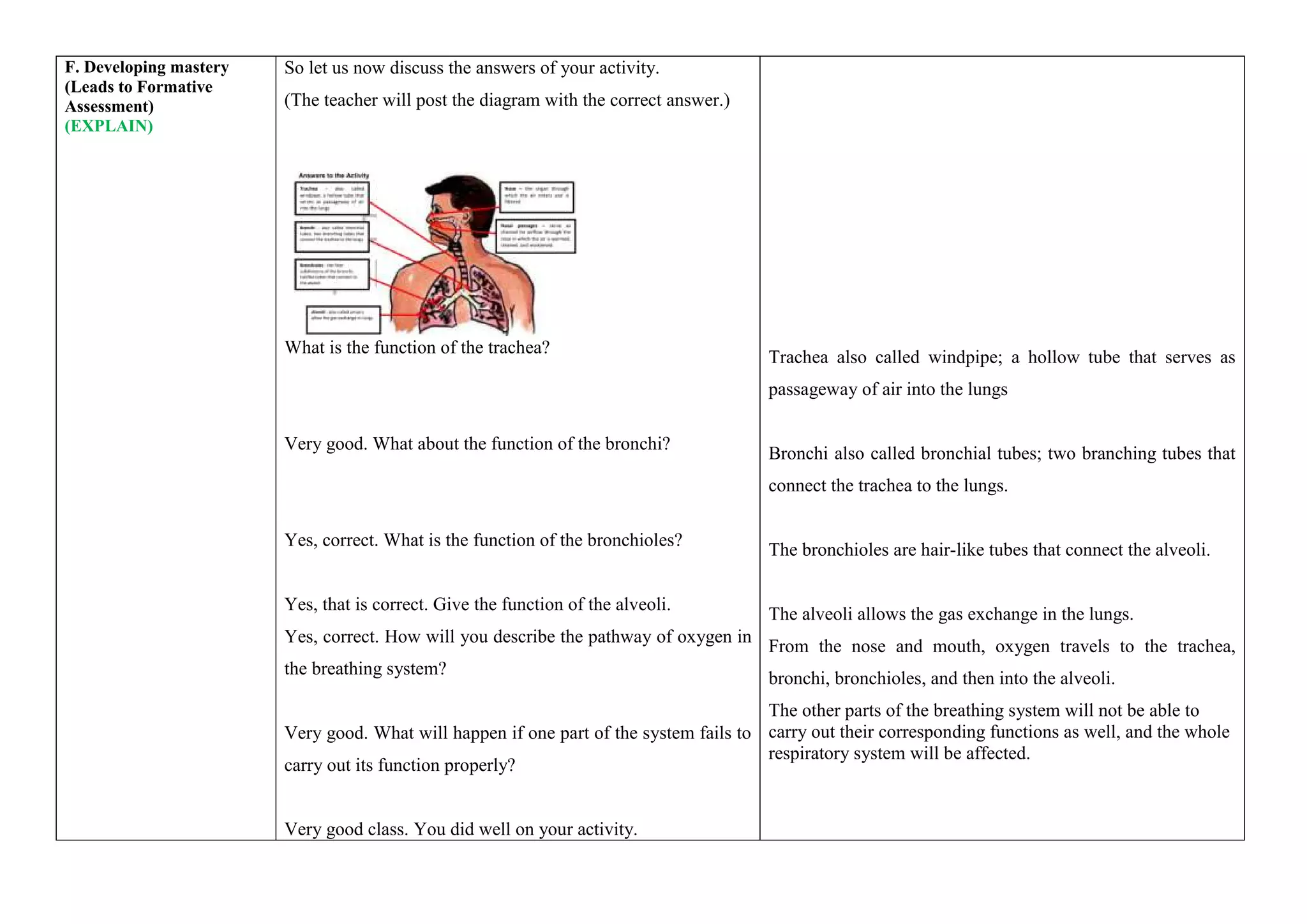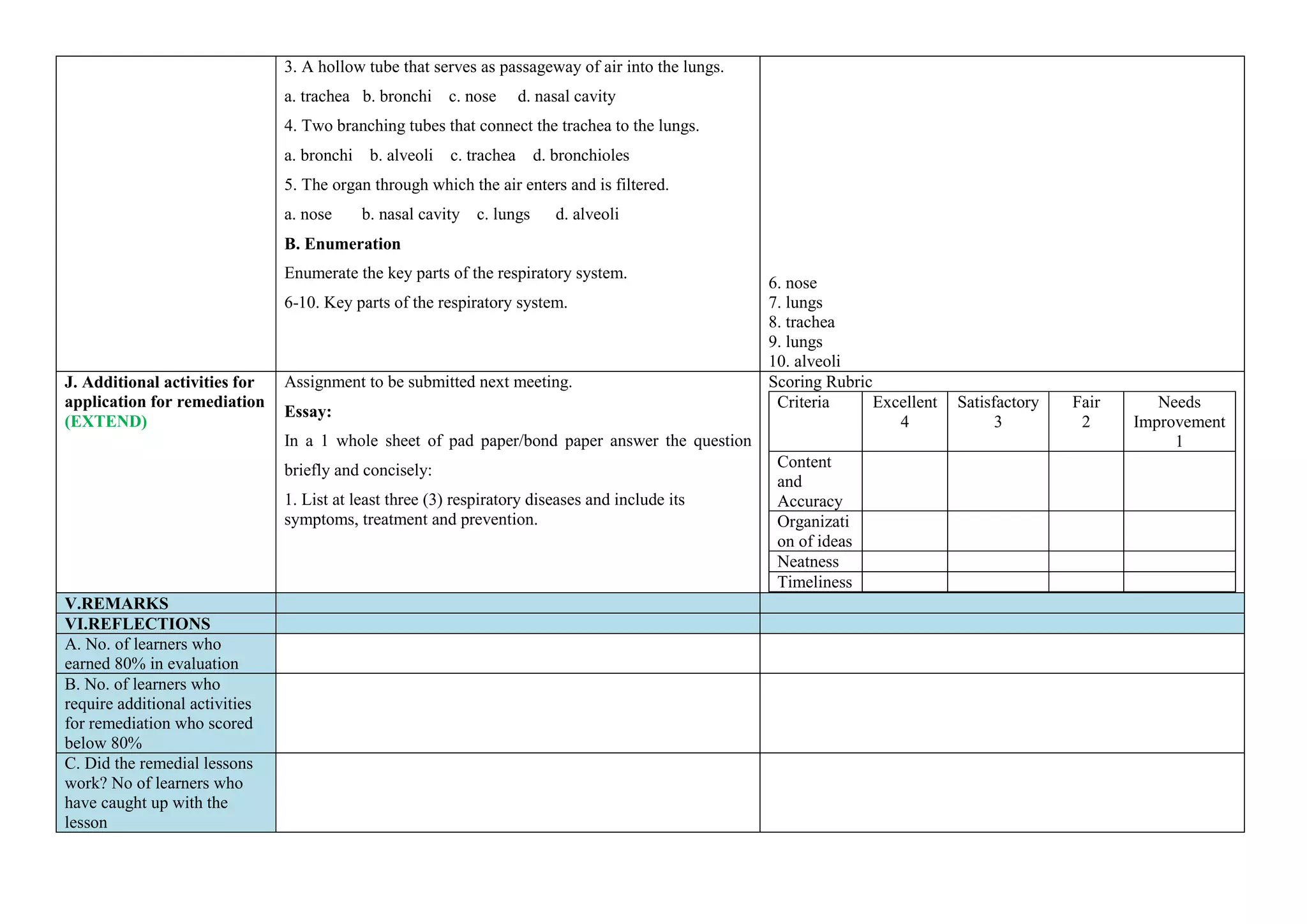The document provides a detailed lesson plan for a 9th grade science class on the respiratory system. The plan outlines objectives, content, learning resources, procedures including an activity to identify parts of the respiratory system using a "bunch of grapes" model, and assessment. The lesson aims to teach students to identify key respiratory parts, their functions, and importance of respiratory health.











